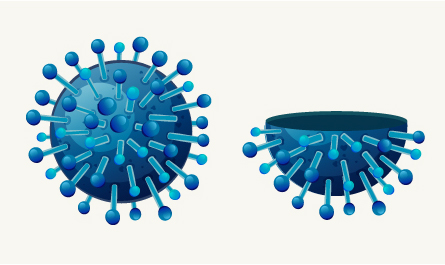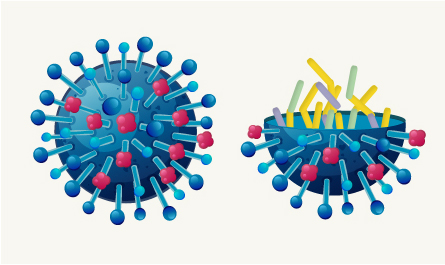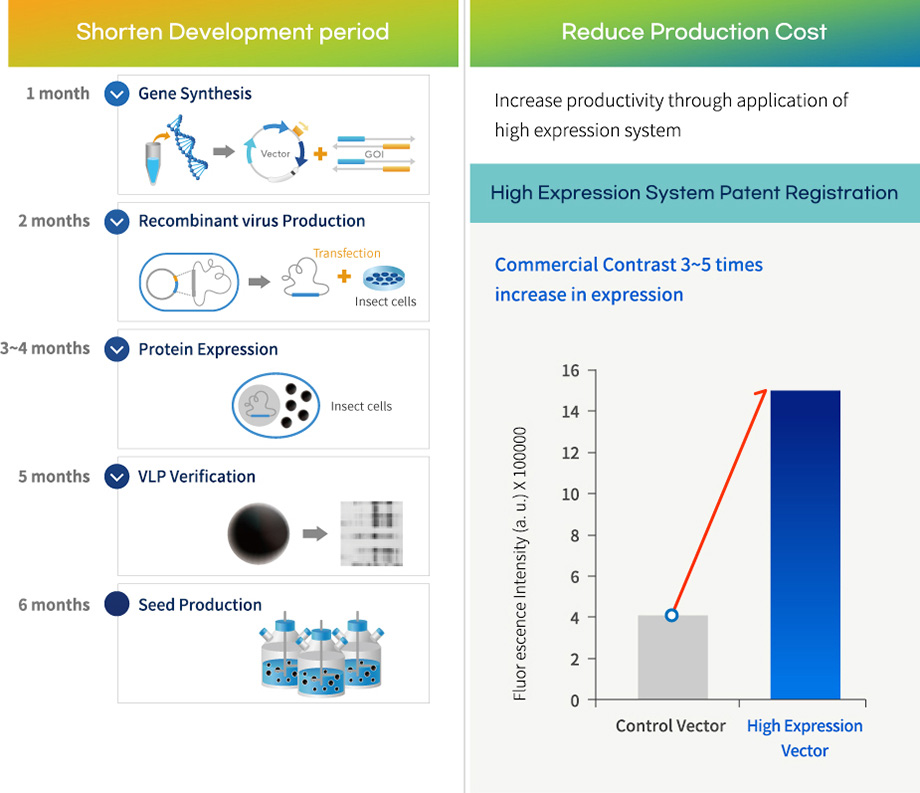Summary
About VLP Vaccine
A vaccine is a biological preparation in which antigens (pathogens) are injected into our body to form immunity before exposure to pathogens. With vaccines, infection by a specific pathogen can be prevented or symptoms can be minimized in the event of infection, and the source of infection can be quickly removed from the body.
Vaccines can be divided into live vaccines and inactivated vaccines according to the type of inoculation antigen. With the development of genetic recombination technology, a range of types of vaccines (subunit vaccines) in which proteins specific to the defense of pathogens are expressed and used as vaccine antigens are being developed. These vaccines are relatively safe, as they do not involve the injection of the pathogen itself into the human body. However, they have the disadvantage of requiring a higher number of inoculations or the use of vaccine adjuvants, because antigenic forms vary.
To overcome these difficulties, there is a recently developed technology in which a vaccine antigen is manufactured based on Virus Like Particles (VLP vaccine). It has a structure similar to that of a virus, the pathogen, and is expected to have increased stability and immune effects, which are issues in existing vaccines.
Comparison of structure in VLP vaccine and virus

VLP Vaccine

Virus
- Produces the same structure as the viral envelope, but without the genome
- High stability without potential for biohazard
- Cellular immunity (sustained immunity induction) possible
- Possible to develop vaccines using yeast and insect cells

Comparison of VLP vaccine
and other vaccine
A VLP vaccine has the same envelope structure as the virus, but does not contain genetic material, thus inducing stability and effective immunity. When the protein with the structure of the virus for which the VLP vaccine is made is produced using genetic recombination technology, it has a similar shape to the pathogen but does not contain the genetic material that causes infection. This means that it is possible to manufacture a safe vaccine antigen without the potential for infection and proliferation.

OptiVLP,
baculovirus-based VLP
Various expression systems have been studied in relation to the development of VLP vaccines, but so far, E. coli, baculovirus, yeast, and the like are available for the commercialized expression system. We are building a baculovirus-insect cell expression system, one of the powerful recombinant protein expression systems.
As it is only pathogenic to insects, which are invertebrates, it is not pathogenic to humans or vertebrates. In addition, compared to proteins made with prokaryotic cell expression systems such as E. coli, its characteristics
are more similar to those of human or animal proteins.
Our company maintains insect cell-generated VLP vaccine antigen production technology (OptiVLP™) which takes less than six months from selecting a target gene to securing a seed virus for vaccine production.

OptiVLP™
- Opti-VLP system capable of completing vaccine development within six months from
selecting a target to securing a seed - Increased productivity (reduced production cost) through application of
the high expression system
